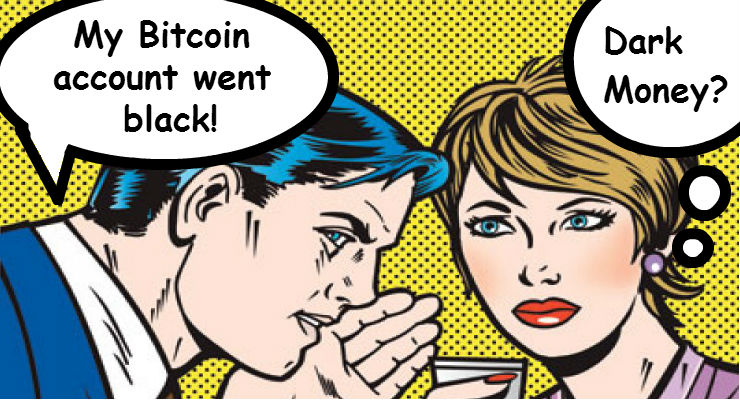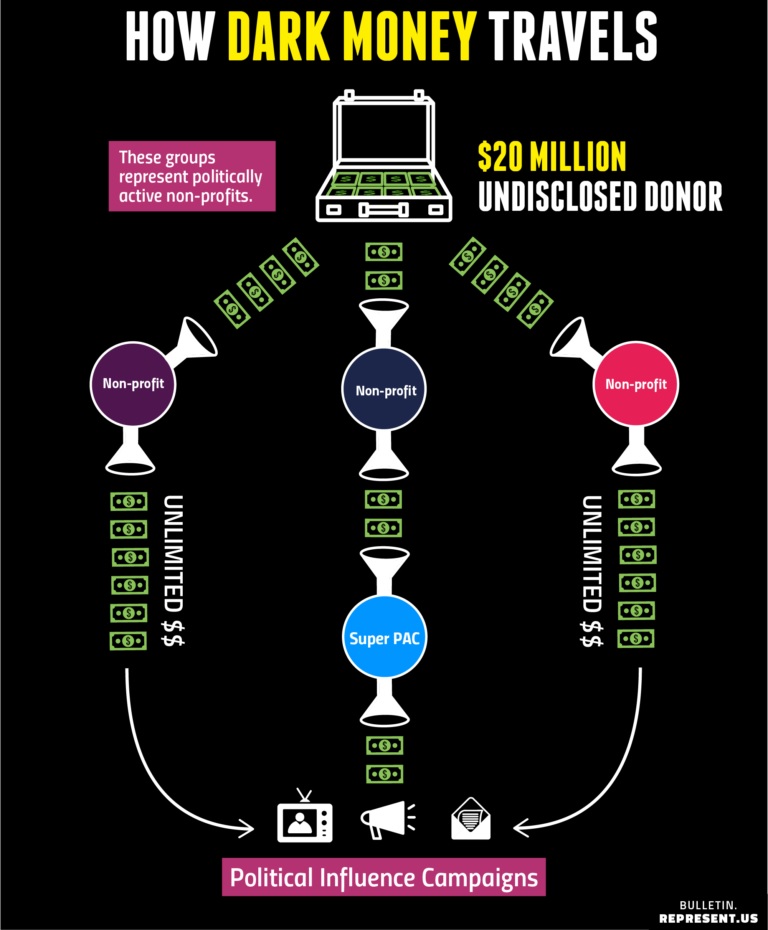
From Laura Fanatico at RepresentUs:
In America, massive amounts of money are being spent on campaign advocacy, and it’s totally hidden from voters. While you can’t see it, dark money has a huge influence on our elections. Millions of dollars are spent on promotional videos and other media without anyone knowing who is funding them. Advertisements gain votes, making the entire electorate a tool wielded by unknown donors.
The good news is that there are actually ways to trace dark money—even if you’re not an investigative journalist. All you need is an internet connection, a computer, and a curious mind.
Here’s what dark money is, how you can trace it, and how you can use your research to hold politicians accountable.
What Exactly is Dark Money?
Dark money is the wealth that flows through shadowy shell companies, such as LLCs or politically active nonprofits, and into a campaign. There is no limit on how much money undisclosed donors can give to these shell companies, so the funds aggregate and are then given to either a super PAC or used immediately for advertising.

This is by no means a recent development. Dark money entered politics with Buckley v Valeo, which was a Supreme Court ruling in the 1970s that claimed spending money on behalf of a political candidate or political party is a form of protected speech.
You may also be familiar with the more recent 2010 case, Citizens United v Federal Election Commission, in which the Supreme Court ruled that the corporate funding of independent political broadcasts in candidate elections is protected by the First Amendment.
Under federal law, dark money is technically legal. But it’s being used to give outsized influence to people based on their ability to give massive financial contributions, so we can’t turn a blind eye.
Read full article here.
Leave a Reply